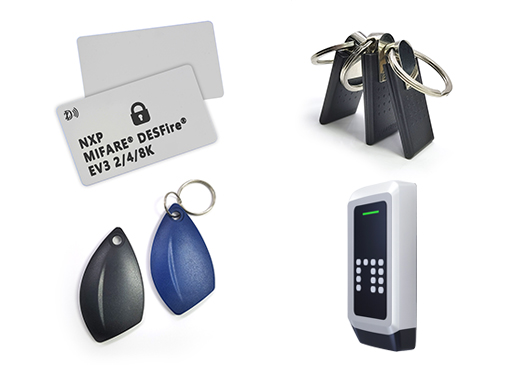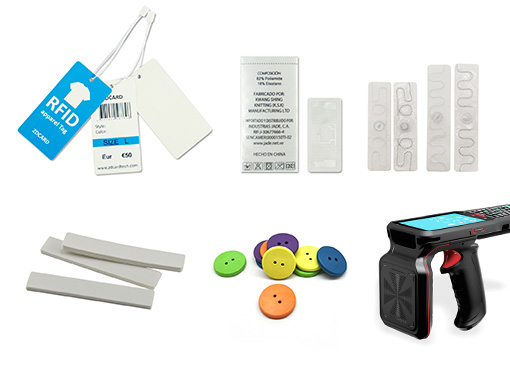The RFID industry is booming, transforming how businesses track assets, manage inventory, and streamline operations. At the heart of this revolution lie two dominant frequency bands: High Frequency (HF) and Ultra-High Frequency (UHF). While both technologies share the same core purpose—wireless identification—their differences in performance, cost, and application make them suited for distinct use cases.
In this guide, we’ll break down RFID HF vs. UHF, explore their strengths, and help you decide which technology aligns with your business goals.
RFID (Radio-Frequency Identification) uses electromagnetic fields to automatically identify and track tags attached to objects. The key difference between HF and UHF lies in their operating frequencies:
HF RFID: Operates at 13.56 MHz, ideal for short-range, secure applications.
UHF RFID: Operates between 860–960 MHz, designed for long-range, high-volume tracking.
This frequency gap shapes how each technology performs in real-world scenarios. Let’s dive deeper.
HF RFID excels in environments where accuracy and security are paramount. Here’s why it’s a top choice for specific industries:
HF’s limited read range (a few centimeters to 1 meter) makes it perfect for:
Contactless payments (e.g., credit cards, mobile wallets).
Access control systems (e.g., key cards for offices or hotels).
Library book tracking, where precise item identification is critical.
HF signals penetrate liquids and metals effectively, making it reliable for:
Healthcare: Tracking surgical tools or medication in metal-heavy environments.
Manufacturing: Monitoring machinery parts in factories.
HF tags store detailed information, enabling applications like:
Smart tickets for events or public transport.
Product authentication for luxury goods.
Transition: While HF thrives in controlled environments, UHF shines in large-scale operations.

UHF RFID is the go-to for industries requiring long-range, high-speed tracking. Its advantages include:
UHF tags can be detected up to 12 meters away, ideal for:
Warehouse inventory management: Scanning entire pallets in seconds.
Retail stockrooms: Automating inventory counts without manual scans.
UHF systems read hundreds of tags simultaneously, streamlining:
Supply chain logistics: Tracking shipments in real time.
Apparel retail: Managing thousands of SKUs during peak seasons.
UHF tags are cheaper than HF tags, making them practical for:
Mass tagging low-cost items (e.g., consumer goods, apparel).
Loss prevention: Tagging high-theft products without significant overhead.
Transition: Choosing between HF and UHF depends on your operational needs. Let’s compare them head-to-head.
| Factor | HF RFID | UHF RFID |
|---|---|---|
| Frequency | 13.56 MHz | 860–960 MHz |
| Read Range | Up to 1 meter | Up to 12 meters |
| Interference | Works near metals/liquids | Struggles with metals/liquids |
| Cost per Tag | Higher ($0.50–$5) | Lower ($0.10–$2) |
| Best For | Secure, short-range applications | High-volume, long-range tracking |
Ask these questions to determine the right fit:
What’s your read range?
Choose HF for secure, close-proximity tasks (e.g., payments).
Choose UHF for tracking items across warehouses or retail floors.
What’s your budget?
UHF is more cost-effective for tagging large inventories.
Are metals or liquids present?
HF performs better in challenging environments (e.g., hospitals, factories).
Do you need bulk scanning?
UHF handles high-throughput operations effortlessly.
RFID technology extends beyond frequency bands. Here’s a quick overview of system types:
Passive RFID: No internal power; relies on reader signals. Common in HF/UHF for cost efficiency.
Active RFID: Battery-powered tags with longer ranges (up to 100 meters). Used for tracking large assets like shipping containers.
A subset of passive UHF RFID, RAIN dominates retail and logistics due to its:
Global standardization (UHF Gen2).
Compatibility with IoT ecosystems.

Q: Can UHF RFID work near metals?
A: While challenging, specialized UHF tags with anti-metal designs are available.
Q: Which is better for retail—HF or UHF?
A: UHF is preferred for inventory management, while HF suits secure transactions (e.g., contactless payments).
Q: What’s new in RFID technology?
A: Innovations include;flexible RFID tags;for textiles and battery-assisted passive (BAP)tags for extended range.
RFID HF and UHF cater to different needs:
HF delivers security and precision for close-range tasks.
UHF offers scalability and speed for large-scale operations.
By evaluating your budget, environment, and use case, you can implement RFID technology that drives efficiency and ROI.
Ready to explore RFID solutions? Contact ZD Technology for a tailored consultation to harness the power of RFID technology to streamline operations, enhance security, and improve efficiency in your business or industry.
Do you need a professional team to provide you with solutions? Contact us for a quote
Let us discuss it with you.